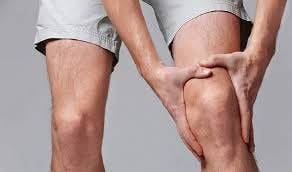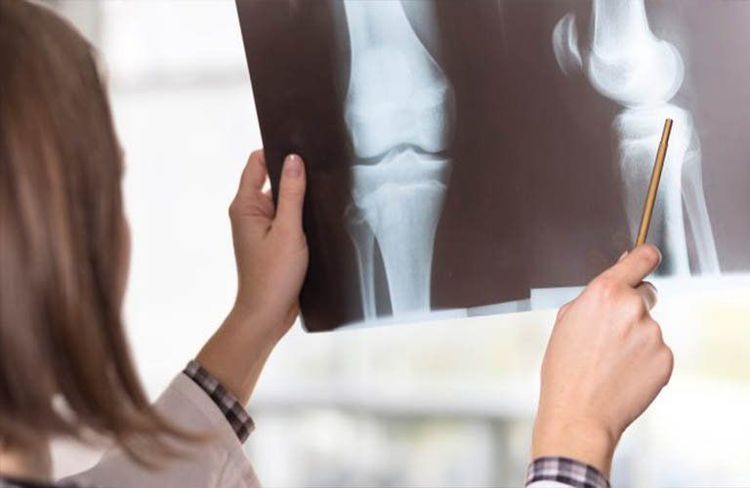This is an automatically translated article.
The article is professionally consulted by Master, Doctor Le Anh Viet - Department of Diagnostic Imaging and Nuclear Medicine - Vinmec Times City International Hospital
Pain in the knee joint on one or both sides, accompanied by stiffness, is a common problem not only in the elderly. This condition is known collectively as dry knee disease. Knee osteoarthritis is not a life-threatening condition, but if left untreated, a dry knee can lead to serious deformity and even disability.
1. What is the cause of dry knees?
Dryness of the knee joint is a phenomenon where the lubricating fluid in the joint is secreted too little, making the knee joint not smooth, there is a crunching sound when moving.
People who are prone to dry joints include:
People over 60 years old: This is a subject prone to musculoskeletal diseases. Young people can also suffer from dry knee joints if they do not provide enough nutrients for the joints. Smokers, drink a lot of alcohol. Obese people, sedentary people. People who often have to do heavy work put pressure on the knee joint. People with knee injuries due to work, accidents or playing sports. There are 3 groups of causes of dry knee joints:
Damage to the joint cartilage. Injury to the subchondral bone. Reduce joint secretion. In particular, the group of causes of cartilage damage is the common reason leading to dry knee joints. These causes include:
Injuries to the meniscus: In between the lower end of the femur and the top of the tibia, there is a cushion between these two bones called the meniscus. Meniscus acts as a shock absorber, protecting the ends of bones from rubbing and abrasion against each other. There are usually two meniscuses on each side of the knee joint, one inside and one outside. Since chondrocytes do not have the ability to regenerate after adulthood, there will be no new cells to replace damaged ones. In addition to degenerating with age, meniscus can also be damaged if you suddenly move incorrectly, causing the knee joint to dislocate or have a direct impact on the knee. This phenomenon is common in cases of injuries caused by sports or other types of physical activity. In many cases, a person with a meniscus injury can still walk, but will have symptoms such as painful swelling of the knee, a feeling of being "locked in", and difficulty moving the knee joint as usual. stiffness and dryness of the knee joint.
Knees are dry due to arthritis: There are 3 common types of arthritis that cause knee pain and stiffness, easily leading to dry knee joints.
Osteoarthritis, also known as degenerative joint disease: occurs due to the wear and tear of the cartilage layer between bones. At that time, the two ends of the bones are easily rubbed against each other, causing pain for the patient when moving. The knee joint is the most prone to osteoarthritis, because this is where the three bones meet: the femur, the patella, and the tibia. The knee joint plays a very important role in walking, moving as well as supporting the body. In most of the process of living, exercising and moving, the knee joint is very susceptible to injury or degeneration, worn out due to constantly bearing great weight of the body. Osteoarthritis of the knee also causes other symptoms such as swelling, inflammation, dryness of the knee joint, ... causing burning pain for the patient.
People aged 55 and older are more susceptible to osteoarthritis of the knee. However, young people can also develop knee arthritis from hard labor or intense sports. Because this disease can lead to dangerous complications, adversely affecting bones and joints, making it difficult to walk and move, you need to actively protect, prevent, and slow down the progression of the disease.
Rheumatoid arthritis: An autoimmune condition that causes the body's protective cells to attack healthy tissue on their own. Rheumatoid arthritis often affects both knee joints. Patients with rheumatoid arthritis may also develop synovitis, which is a thin membrane that covers the inside of the knee joint. When the synovial membrane becomes inflamed, it can cause the knee joint to become dry and stiff, causing pain. Post-traumatic knee arthritis: Injuries such as meniscus tears and ligament tears can make the knee joint more vulnerable, leading to post-traumatic arthritis (PTA). The condition usually occurs many years after the knee injury. Knee Ligament Injuries: Injuries to the ligaments can occur during vigorous activity such as playing sports or overextending the knee. When one of the knee ligaments is torn, torn, or torn, there is also the risk of internal bleeding. Other symptoms of knee ligament injury are:
Swollen, painful knee joint. Poor knee stability. Osteoarthritis: Or stiff knee syndrome occurs when around the knee joint forms a large amount of hard, dense scar tissue. This condition often occurs in people with arthritis who have undergone knee surgery such as a knee replacement or surgery for a knee ligament injury. Some of the symptoms of knee osteoarthritis are:
Knee pain that shows no signs of improvement but is getting worse. Swollen, hot knee joints; Knees are bent when walking.

2. Dry knee when need to see a doctor?
You should see a doctor as soon as possible if you have:
Injury to the knee. Knee pain that does not subside with rest and is accompanied by other symptoms such as swelling, heat, and sound when moving. Timely treatment will help reduce the risk of further damage to the knee joint. Your doctor can determine the cause of your dry knee and prescribe the right treatment plan to help you return to normal movement soon.
In some cases, a chiropractor and a physiotherapist will coordinate treatment for the patient. If surgery is indicated, the patient will be referred to an orthopedic surgeon.
3. Medical techniques to help diagnose dry knee disease
Some medical techniques to help diagnose dry knee disease are imaging studies such as:
X-ray. Magnetic resonance imaging (MRI). Knee ultrasound. X-rays are an appropriate screening test for patients with knee pain, especially those who are elderly. And the results of an X-ray can often tell if an MRI is helpful. An MRI scan costs 12 times more than an X-ray. Therefore, it is not advisable to abuse high technology such as MRI in diagnosing knee joint diseases.
If an X-ray image shows a person has significant arthritis, the findings of the MRI are of little importance. Meanwhile, magnetic resonance imaging is often widely used by doctors to diagnose diseases related to the ligaments of the knee joint. X-ray in the diagnosis of knee disease may be a better diagnostic method for knee disease, because it is simple, helping to reduce the time and cost of medical examination and treatment.

Patients need to go to a reputable hospital to conduct examination and treatment as soon as there are signs of dry knee joint. Currently, Vinmec International General Hospital is one of the leading prestigious hospitals in the country, trusted by a large number of patients for medical examination and treatment. Not only the physical system, modern equipment: 6 ultrasound rooms, 4 DR X-ray rooms (1 full-axis machine, 1 light machine, 1 general machine and 1 mammography machine) , 2 DR mobile X-ray machines, 2 multi-row CT scanner rooms (1 256 series and 1 512 series), 2 Magnetic Resonance imaging rooms (2 3 Tesla machines) 1 interventional angiography room 2-level intervention and 1 bone mineral density measurement room.... Vinmec is also the place to gather a team of experienced doctors and doctors who will greatly assist in the diagnosis and early detection of abnormal signs. of the patient's body. In particular, with a space designed according to 5-star hotel standards, Vinmec ensures to bring the patient the most comfort, friendliness and peace of mind.
Please dial HOTLINE for more information or register for an appointment HERE. Download MyVinmec app to make appointments faster and to manage your bookings easily.














